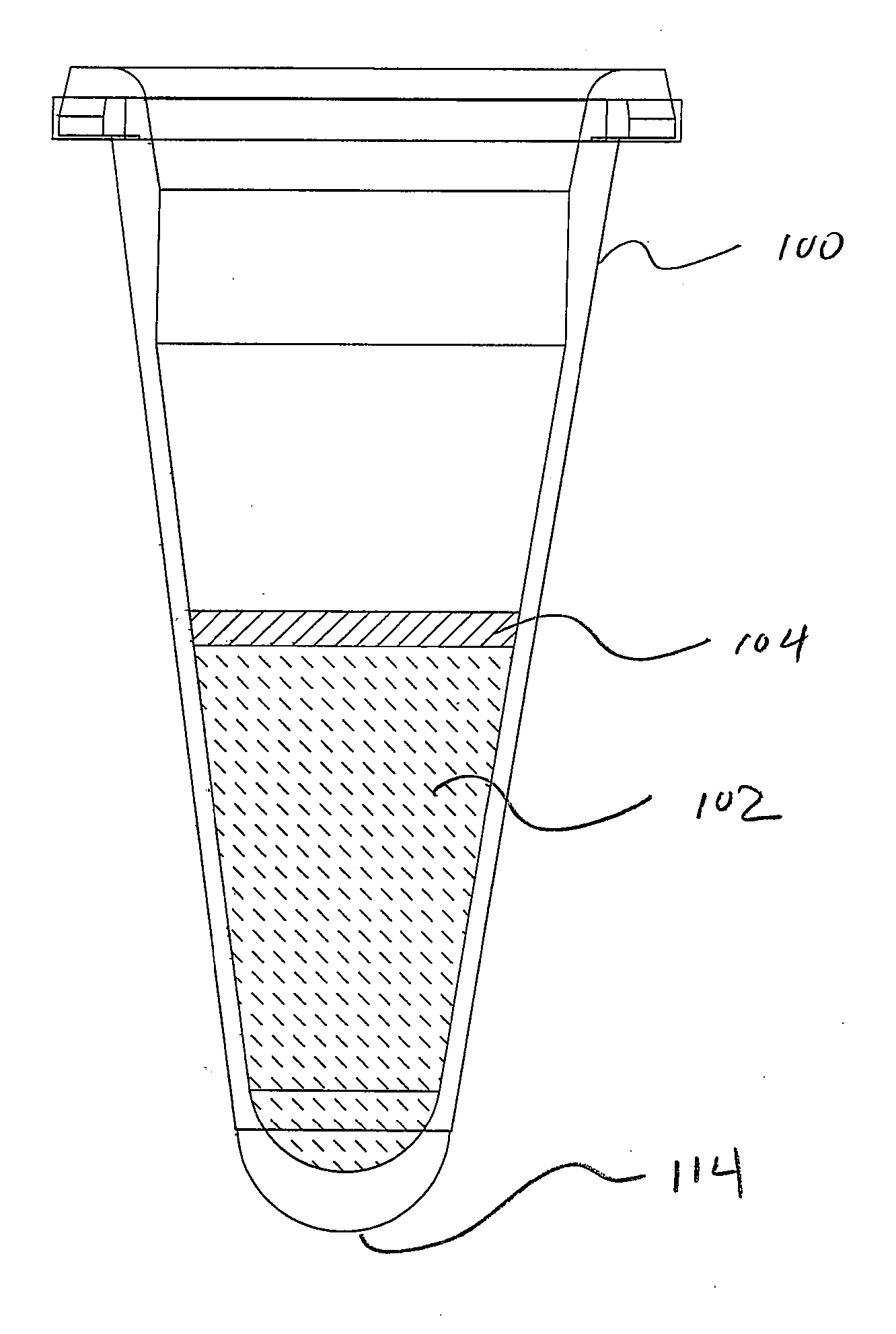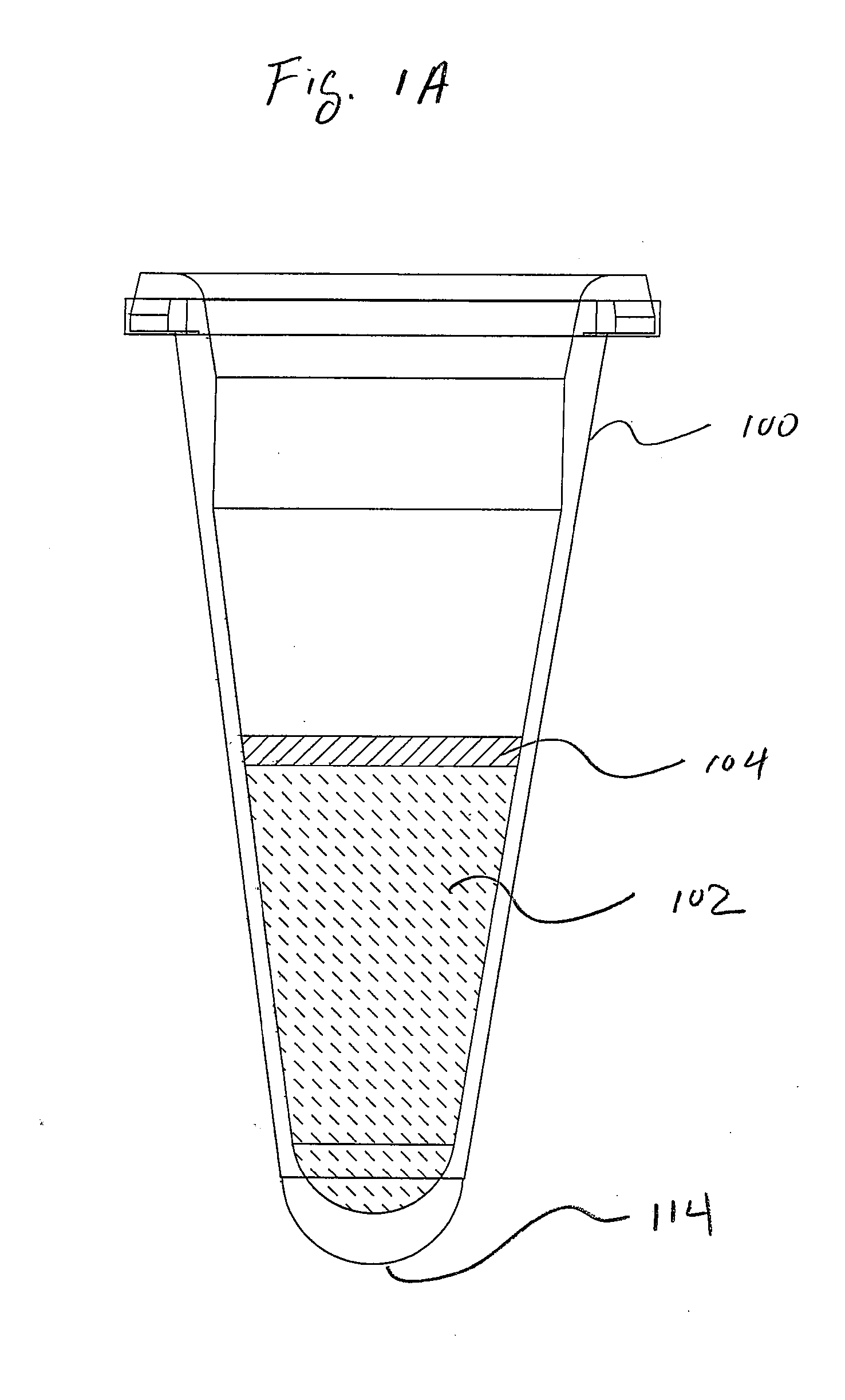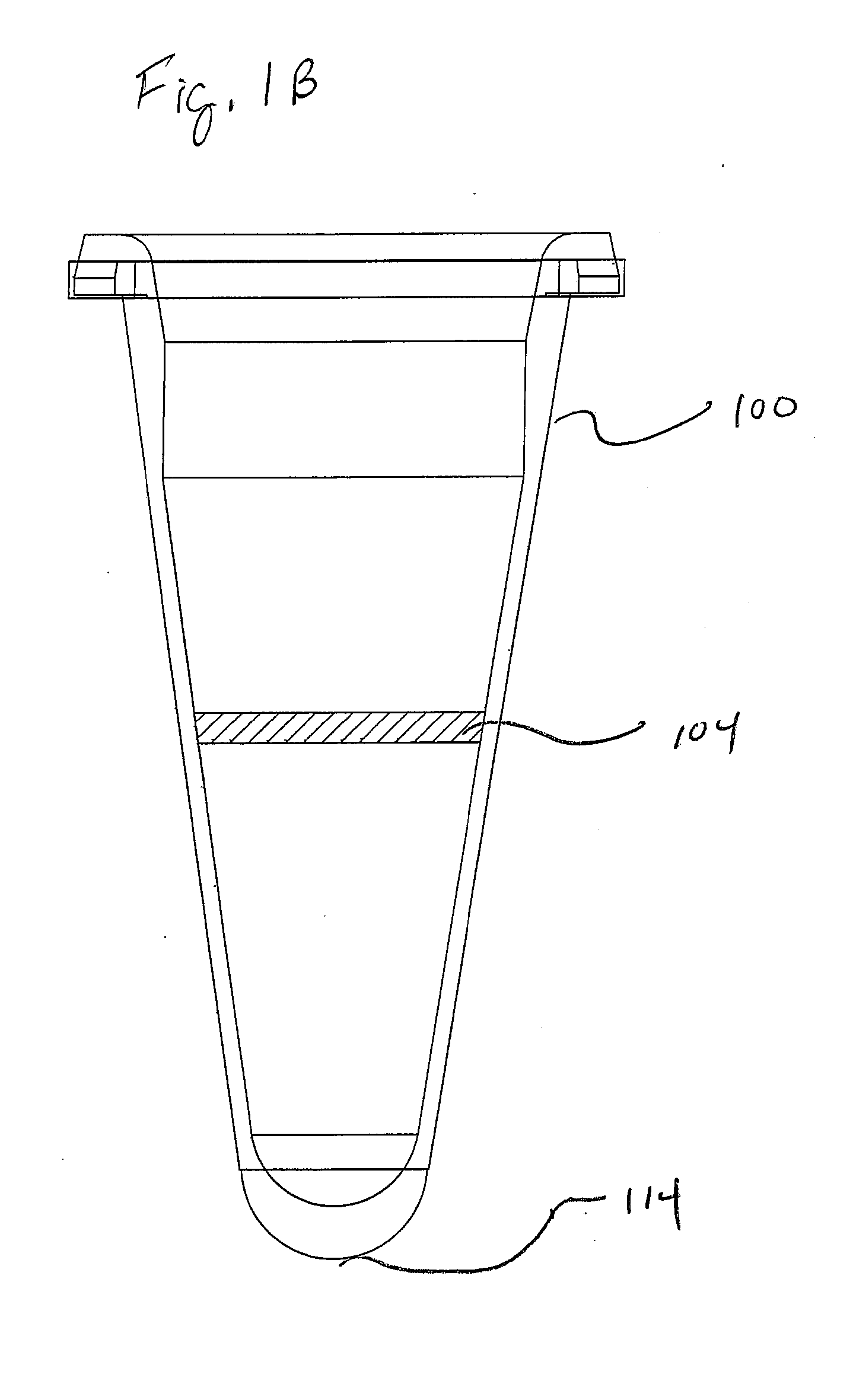Thermocycler seal composition, method, and application
a technology of thermocycler and seal, applied in the field of molecular biology, can solve the problems of difficult liquid handling of such an oily substance in some types of integrated systems, affecting the efficiency of thermocycler, so as to reduce or prevent the evaporation or condensation of solution, the effect of preventing evaporation and/or condensation
- Summary
- Abstract
- Description
- Claims
- Application Information
AI Technical Summary
Benefits of technology
Problems solved by technology
Method used
Image
Examples
Embodiment Construction
[0021]As shown in FIG. 1A, a typical PCR reaction tube 100 is a cone-shaped ampule that tapers to a closed end 114. Purified nucleic acids and a PCR master mix (hereinafter, the “solution”) 102 are introduced into the tube and subjected to variable (PCR) heating and cooling cycles (thermocycles). The first such PCR cycle is always an extended temperature cycle above 90° C. The temperature then cycles repeatedly from about 30° C. to about 98° C. until 20 to 50 such cycles have been completed. During the process, the small volume of solution 102 in the tube is subject to evaporation due to the elevated temperatures and, condensation may occur as the system is cooled. If the reaction is open to the atmosphere, then the small volume of solution will undergo changes in concentration of the reactants with a resulting variability or complete failure of the reaction. As shown in FIG. 1A, a layer of an immiscible, liquid silicone oil (95%) / wax (5%) mixture 104 floats on the surface of the so...
PUM
| Property | Measurement | Unit |
|---|---|---|
| temperature | aaaaa | aaaaa |
| temperature | aaaaa | aaaaa |
| temperature | aaaaa | aaaaa |
Abstract
Description
Claims
Application Information
 Login to View More
Login to View More - R&D
- Intellectual Property
- Life Sciences
- Materials
- Tech Scout
- Unparalleled Data Quality
- Higher Quality Content
- 60% Fewer Hallucinations
Browse by: Latest US Patents, China's latest patents, Technical Efficacy Thesaurus, Application Domain, Technology Topic, Popular Technical Reports.
© 2025 PatSnap. All rights reserved.Legal|Privacy policy|Modern Slavery Act Transparency Statement|Sitemap|About US| Contact US: help@patsnap.com



